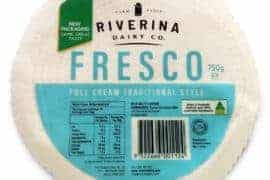Ultimate Guide to Making Slime: Fun and Easy Recipes for Parents and Kids
Hey there, enthusiastic parents and creative kiddos! Are you ready to embark on an adventure into the gooey, stretchy world of slime? You’re in the right place! Our Ultimate Guide to Making Slime is your ticket to hours of fun. We’ll give you the scoop on easy-to-make slime recipes that are both kid-friendly and parent-approved. So, gather around, as we turn your kitchen into a mini science lab where magical slime comes to life!
What is Slime, and Why Do Kids Love It So Much?
Slime is not just a sticky, entertaining goo; it’s a phenomenon that has captured the hearts of children and adults alike. This tactile sensation offers a unique way to engage the senses while unleashing infinite possibilities for play and creativity. Plus, the process of making slime can introduce little scientists to basic chemistry concepts in a super fun way!
Before You Begin: Setting Up for Slime Success
Before diving into the slime recipes, let’s ensure your slime-making experience is a success. Here’s a quick checklist to go through:
- A clean workspace with a washable surface.
- All ingredients and tools listed in the recipes below.
- An enthusiastic spirit and a dash of creativity.
Remember, safety is key! While most ingredients in our slime recipes are non-toxic, adult supervision is still a must. And hey, who doesn’t love a chance for some hands-on family fun?
The Basic Slime Recipe: The Foundation of All Slime Creations
Let’s start with the basics. This simple, foolproof recipe will give you classic, perfect-every-time slime:
Ingredients:
- 1/2 cup of clear or white PVA school glue
- 1/2 teaspoon of baking soda
- 1/4 cup of water
- 1-2 tablespoons of contact lens solution (make sure it contains boric acid)
- Food coloring (optional)
- Glitter or confetti (optional, for that extra sparkle)
- In a mixing bowl, combine the glue and water until well blended.
- Add your favorite food coloring and any glitter or confetti to the mixture.
- Stir in the baking soda until fully dissolved.
- Gradually mix in the contact lens solution until the slime starts to form and pull away from the sides of the bowl. You may not need the full amount, so add it slowly!
- Knead the slime with your hands until it reaches the desired consistency.
Voilà! You now have a beautiful, stretchy slime to play with. But that’s just the beginning, friends! Let’s jazz things up with some variant recipes.
Fun and Colorful Slime Variations
Ready to take your slime to the next level? Let’s explore some colorful and creative variations that will keep the fun rolling:
Fluffy Slime:
- Add shaving foam to the basic recipe for a spongier texture.
- Mix in a generous amount of fine glitter with the basic ingredients for some sparkle.
- Introduce iron oxide powder to create slime that reacts to magnets.
- Use edible ingredients like marshmallows, cornstarch, and coconut oil for a taste-safe version.
These variations not only add a fun twist to your standard slime but also open up a world of sensory exploration for your kiddos. Stay tuned as we dive deeper into each of these fantastically fun recipes, and prepare to become the coolest slime scientist in town!

Five Essential Tips for Parents Preparing Slime Recipes
As you gear up for this gooey quest, parents should keep these five pointers in mind for a stellar slime-making session:
1. Understand the Ingredients
Knowing what’s in your slime matters. Review the ingredients of each recipe carefully, especially if your child has sensitive skin or allergies. PVA glue, baking soda, and contact lens solution are commonly used, but some recipes may call for other substances like borax or shaving foam.
2. Wear Play Clothes
Slime making can be a messy affair! Make sure both you and your little one don your “play” clothes, or use aprons to avoid any stains. Slime can get everywhere, and it’s better to be safe than scrubbing glue out of your favorite shirt.
3. Set Up In A Slime-Proof Area
Choose a spot in your home that’s easy to clean. Non-porous surfaces like glass tables or plastic placemats work best. Covering the table with newspaper or a disposable tablecloth can also make clean-up easier. Avoid carpets or upholstery, where slime can be a nightmare to remove.
4. Use Measuring Tools
Slime recipes aren’t just art—they’re science! Use measuring cups and spoons to ensure accurate proportions. Too much of one ingredient or too little of another can turn your slime masterpiece into a mess.
5. Be Patient and Have Fun
Slime may not reach the perfect consistency immediately, so be patient—especially during the kneading stage. It takes a little time for the ingredients to blend and stabilize. And remember, the goal is to have fun with your kids, so embrace the process, even if the first attempts don’t turn out perfectly.
Armed with these tips, parents can feel more prepared to jump into the slime-making journey. This entertaining activity not only provides heaps of fun but also fosters bonding, creativity, and learning. So, let’s roll up those sleeves, and create some slimy memories that will stick!
Deep Dives into Fun Slime Variations
Your guide to slime-making is just beginning to bloom! Keep exploring the fantastic array of slime recipes that lie ahead. There is something for everyone—from sparkly glitter slime that twinkles to stretchy, fluffy slime that feels like a cloud, and even incredible edible slimes that are safe to taste. Get ready for more fun and vibrant slime creation sessions with your little ones!
See more great Things to Do with Kids in New Zealand here. For more information see here
Disclaimer
The articles available via our website provide general information only and we strongly urge readers to exercise caution and conduct their own thorough research and fact-checking. The information presented should not be taken as absolute truth, and, to the maximum extent permitted by law, we will not be held liable for any inaccuracies or errors in the content. It is essential for individuals to independently verify and validate the information before making any decisions or taking any actions based on the articles.




